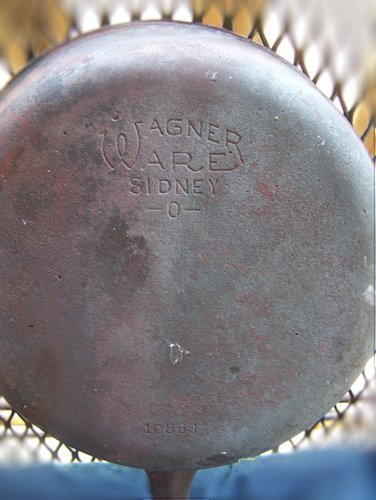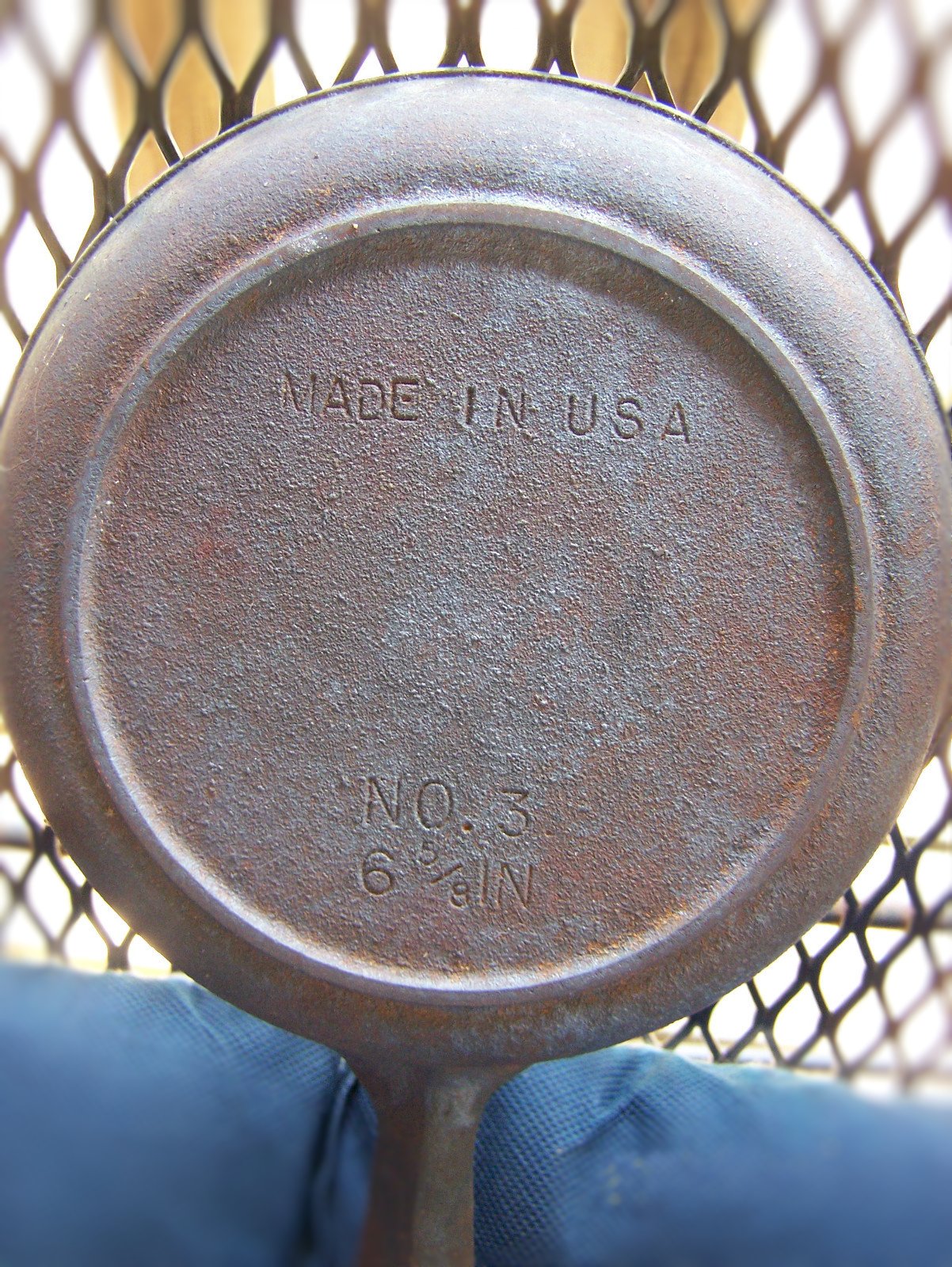Linn Stevens
New member
I have only owned three pieces of cast iron. All three modern Lodge skillets (6", 8" and 12") purchased this year at Walmart. I'd really like to become better acquainted with the differences in vintage cast iron and Lodge's modern cast iron.
Important back story: I took thorough measure to clean this skillet all in attempt to end the "black stuff" (I chose the 6" of my three Lodge skillets because it was easiest for testing purposes but all three produce the same black residue equally).
I first placed the pictured skillet in a high-end ceramic cooker (Big Green Egg) and baked the skillet at 900-1000F for one hour. After cooling for 3 hours I began scrubbing it and noted this black residue simply wouldn't stop wiping off the skillet.
In further attempt to stop the black residue from coming off I assembled a very capable electrolysis tank almost identical to Jeff's (The Culinary Fanatic). After 20 hours of 20 amp electrolysis the pan looked a little nicer perhaps (not much) but the black residue persisted as ever.
I've not found a clear answer online so I wanted to ask here very simply: What, precisely, is this unending black residue/soot that comes off these modern Lodge skillets?
Is it remnants of Lodge's factory seasoning?
Is it remnants of carbon from my own previous seasoning?
Is it a "flash-iron" similar to "flash-rust" release of the raw iron itself?
Is this what happens on all cast iron pans when you get down to raw iron?
I'm not worried about it and I know a single coat of seasoning will almost completely prevent further release of the the black residue -- I just want to know exactly what the black residue is.
Lodge 6" Skillet after an hour 1000F burn-off and 20 hours of 20 amp electrolysis.

Just brush and water to remove anything remaining after electrolysis

First round of Palmolive

After a good 3 minute scrub you can see the murky colored suds

Dark suds, still, after a through burn-off and electrolysis?

Important back story: I took thorough measure to clean this skillet all in attempt to end the "black stuff" (I chose the 6" of my three Lodge skillets because it was easiest for testing purposes but all three produce the same black residue equally).
I first placed the pictured skillet in a high-end ceramic cooker (Big Green Egg) and baked the skillet at 900-1000F for one hour. After cooling for 3 hours I began scrubbing it and noted this black residue simply wouldn't stop wiping off the skillet.
In further attempt to stop the black residue from coming off I assembled a very capable electrolysis tank almost identical to Jeff's (The Culinary Fanatic). After 20 hours of 20 amp electrolysis the pan looked a little nicer perhaps (not much) but the black residue persisted as ever.
I've not found a clear answer online so I wanted to ask here very simply: What, precisely, is this unending black residue/soot that comes off these modern Lodge skillets?
Is it remnants of Lodge's factory seasoning?
Is it remnants of carbon from my own previous seasoning?
Is it a "flash-iron" similar to "flash-rust" release of the raw iron itself?
Is this what happens on all cast iron pans when you get down to raw iron?
I'm not worried about it and I know a single coat of seasoning will almost completely prevent further release of the the black residue -- I just want to know exactly what the black residue is.
Lodge 6" Skillet after an hour 1000F burn-off and 20 hours of 20 amp electrolysis.

Just brush and water to remove anything remaining after electrolysis

First round of Palmolive

After a good 3 minute scrub you can see the murky colored suds

Dark suds, still, after a through burn-off and electrolysis?

Last edited:






